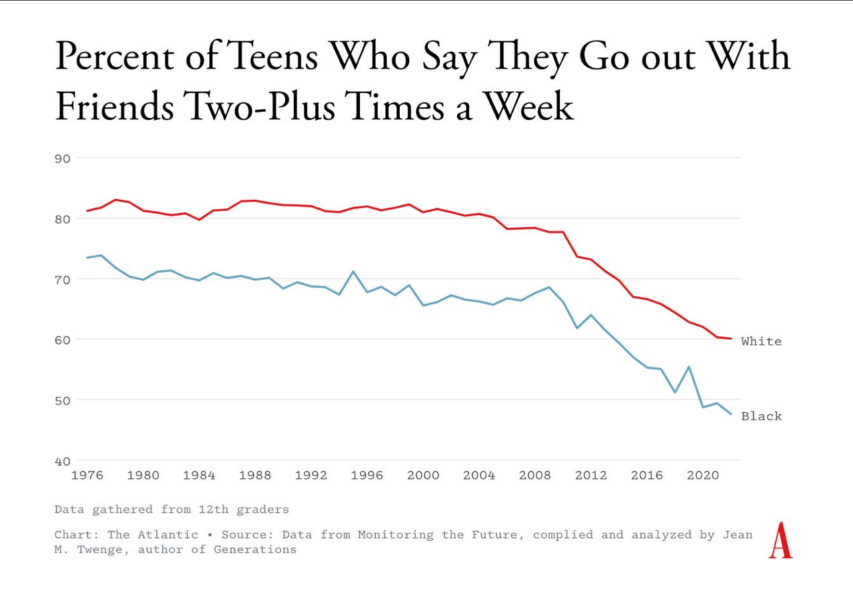Magdalene J. Taylor follows up her New York Times article from last year with more evidence that so many of the social problems identified today are caused by, or at least made worse, by the almost universal addiction to smartphones:
A year ago, I published an opinion essay for the New York Times that changed the trajectory of my career. It was about how fewer Americans are having sex, across nearly every demographic. For any of the usual caveats — wealth, age, orientation — the data almost always highlighted that previous generations in the same circumstances were having more sex than we are today. My purpose in writing the essay was mainly to try to emphasize the role that sex plays in our cultural wellbeing its connection to the loneliness epidemic. Many of us have developed a blasé attitude toward sex, and I wanted people to care. It wasn’t really about intercourse, and I said as much. It was about wanting to live in an lively, energetic society.
Since writing, I have been continuously asked what I think the cause of all this is. Obviously, there isn’t one universal answer. After publishing, I went on radio shows and podcasts and was asked to share what I thought some of them could be. Economic despair, political unrest, even climate fears were among the reasons I’d heard cited. But all of that, honestly, feels pointlessly abstract. It puts the problem entirely out of our hands, when in fact I believe it may quite literally be in them.
The problem is obviously our phones.
In February, The Atlantic published a feature about the decline of hanging out. Within it was a particularly damning graph sharing the percentage of teens who report hanging out with friends two or more times per week since 1976. Rates were steady around 80 percent up until the mid-90s, when a subtle decrease began to occur. Then, in 2008 — one year after the release of the first iPhone — the decrease became much more dramatic. It has continued falling sharply since, hovering now at just under 60 percent of teens who spend ample time with friends each week.
Some of us really don’t like our screen time habits criticized. Others may think they appear smarter by highlighting other issues, that they can see above the fray and observe the macro trends that are really shaping our lives, not that stupid anti-phone rhetoric we hear from the Boomers. And some of these other trends do indeed apply. Correlation does not equal causation. Lots of things happened in 2008. Namely, a financial crisis the effects of which many argue we are still experiencing. When I shared the graph on Twitter/X saying phones are the obvious cause, this was one of the most common rebuttals. Another was the decline in third spaces. There are indeed few places for teenagers to hang out outside of the home. Skate parks are being turned into pickleball courts with “no loitering” signs, malls are shuttering and you can no longer spend $1 on a McChicken to justify hanging out in the McDonald’s dining area for hours. But as the Atlantic piece explains, the dwindling of places to be and experience community has a problem we’ve been lamenting since the 90s. And it’s not just teens — everyone is spending less time together than they used to. “In short, there is no statistical record of any other period in U.S. history when people have spent more time on their own,” the article states.





